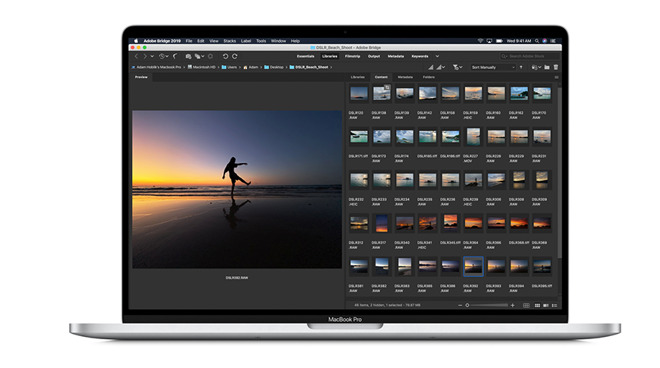macOS Catalina beta build suggests upcoming 'Pro Mode'
Some snooping around in the new macOS Catalina 10.15.3 beta build has unearthed references to "Pro Mode," which could be used to temporarily boost the performance of macOS systems such as the MacBook Pro.

The new mode can be toggled on and off by users, and suggests that it may be designed to boost performance of MacBooks, such as the new 16-inch MacBook Pro.
When toggled on, some strings state "Apps may run faster, but battery life may decrease and fan noise may increase." Additionally, toggling on Pro Mode activates a string that reads "Fan speed limit overridden."

Image Credit: 9to5mac
It also appears that Pro Mode will likely only work with MacBooks, and possibly only with newer models that boast the new thermal design, such as the newly introduced 16-inch MacBook Pro. Apple may also be gearing up to release another MacBook Pro in the coming months, as suggested by a new regulatory finding.
As noted by 9to5Mac, this is likely done to temporarily improve performance by ignoring the normal power-saving restrictions. Internal fans will run at a higher speed to prevent overheating issues.
Like "Do Not Disturb," Pro Mode will be switched off by the next day.
It's unclear when Pro Mode will be unleashed, if at all. Also unknown is if the new performance-boosting mode will be restricted solely to the MacBook Pro, iMac Pro, or Mac Pro running macOS Catalina.

The new mode can be toggled on and off by users, and suggests that it may be designed to boost performance of MacBooks, such as the new 16-inch MacBook Pro.
When toggled on, some strings state "Apps may run faster, but battery life may decrease and fan noise may increase." Additionally, toggling on Pro Mode activates a string that reads "Fan speed limit overridden."

Image Credit: 9to5mac
It also appears that Pro Mode will likely only work with MacBooks, and possibly only with newer models that boast the new thermal design, such as the newly introduced 16-inch MacBook Pro. Apple may also be gearing up to release another MacBook Pro in the coming months, as suggested by a new regulatory finding.
As noted by 9to5Mac, this is likely done to temporarily improve performance by ignoring the normal power-saving restrictions. Internal fans will run at a higher speed to prevent overheating issues.
Like "Do Not Disturb," Pro Mode will be switched off by the next day.
It's unclear when Pro Mode will be unleashed, if at all. Also unknown is if the new performance-boosting mode will be restricted solely to the MacBook Pro, iMac Pro, or Mac Pro running macOS Catalina.

Comments
No one can please everyone all the time. Certainly not Apple. LOL
edit: I take that back. I missed the part about it being temporary and decreasing battery life, etc.
Anyways, this could be bad news vis-a-vis Intel. They are on their 3rd or 4th “turbo boost” technique now. They spent the last two years with thermal velocity boost and destroying what it means to have a TDP. Maybe Apple has finally given up hope and are designing their computers under the assumption that Intel isn’t going to give them increased performance/Watt anymore. It’s more performance means more Watts now, and Intel will be expanding the number of SKUs that are unlocked and can run far above TDP, making a loud performance mode a feature.
I have the 2019 Air, I could get 330cb if I can keep the fan at maximum speed (8000 RPM), I'm using Macs Fan Control.
A lot of games written for 8088-series CPUs were timed against the speed of the CPU, not the internal clock. This would render an arcade game on a faster game as unplayable.
The effect was unnoticeable on non-game apps (word processors, whatever) because those old DOS apps really ran pretty fast on anything, as there was no GUI to update. Some sort of complex WordPerfect or Lotus 1-2-3 function would probably be visibly slower if one did a side-by-side benchmark, but not enough people has spare computers lying around to even do a comparison like that.
One would probably never notice unless they tried to play a game like King's Quest I on a 486, and games were improving at such a rapid clip that nobody cared, definitely not surprising that many buttons weren't hooked up.
With any system that is performing a job the key performance indicator is overall throughput for the job being performed. Allowing users to tweak some of the individual performance settings without getting realtime feedback as to the impact on actual throughput for the job at hand is often a game of simply moving the bottleneck from one part of the system to another. The caveats indicated by Apple imply that the bottlenecks are mainly cooling and noise related. Hmmm.
However, like others have said, the actual user benefit may be the result of the placebo effect.